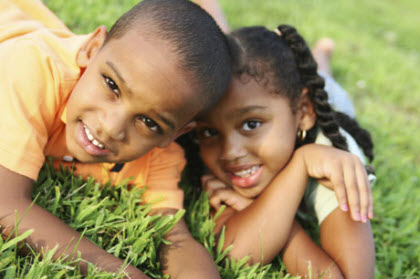 On the first day of preschool, Issaquah mom Megan Thomas watched as her 4-year-old son, Aiden, tried to make friends. He was “the new boy” — most of the children in his class had been together the previous year. For nearly a month, Aiden was left out during free play time. “He brought it up with my husband over breakfast one morning about a week into school,” she says. “I think it was difficult for him.”
On the first day of preschool, Issaquah mom Megan Thomas watched as her 4-year-old son, Aiden, tried to make friends. He was “the new boy” — most of the children in his class had been together the previous year. For nearly a month, Aiden was left out during free play time. “He brought it up with my husband over breakfast one morning about a week into school,” she says. “I think it was difficult for him.”
It’s painful to watch your child be marginalized or left out, and unsettling to project what things might be like few years down the road. Will he be bullied? Treated fairly? Welcomed at the lunch table?
Perhaps most important of all, will your child be nice to his playmates — or will he be one of the kids who doesn’t welcome others into his circle?
Young children are open and accepting by nature, says Elizabeth Joy Erwin, Ed.D., professor of early childhood inclusive education at Montclair State University in New Jersey. They’re not born with a desire to discriminate — by race, age, sexual orientation or socioeconomic status. But they are surrounded by a culture that’s bursting with stereotypes and complex social messages. “Over time, kids start picking up on these social cues,” Erwin explains. “That’s why it’s so urgent to promote healthy habits.”
Gloria DeGaetano, founder of Bellevue-based Parent Coaching Institute, says over time, children learn to exclude others and to fear differences. “They model behavior, imitating what they see without any thought,” she says.
Playground politics
Playground clashes happen. But with very young children, those disputes are typically about “She won’t let me have a turn on the swing,” says DeGaetano. At the toddler stage, exclusions have nothing to do with bigotry. A 3-year-old, for example, is not thinking about another child’s race, social status or whether that child has two mommies when he doesn’t include another preschooler in a game of hide-and-seek.
By age 5 or 6, however, children may notice differences in others. Some become wary of kids who are not just like themselves. That’s why DeGaetano suggests teaching children the beauty of differences early on.
“We want to support the learning of the socialization process at a very young age,” she says. This includes fostering an understanding and appreciation of diversity of all kinds and teaching effective problem-solving skills, so that when conflicts do arise, kids can handle them without name calling or bullying.
“Without this guidance, you see children who are non-gracious, disrespectful, self-serving and mean-spirited,” says DeGaetano. And while teachers should play a role in managing difficult situations on the playground and in the classroom, the foundation of the child’s mentality is usually shaped at home, says Erwin.
Promoting acceptance
So, how can parents be good teachers? For starters, parents can create opportunities for peer exchanges, offering children experiences in interacting with others, says Erwin. “Nurture their relationships by setting up playdates.”
Erwin also suggests celebrating diversity at home by exposing kids to different kinds of music, experimenting with ethnic foods and reading books that reflect values you’d like to encourage. “It’s about embracing all kinds of diversity as a part of your daily life,” she says.
Watch for stereotypes you see crop up on television or in real life. Say, for example, you or your child overhears someone make a bigoted comment at the grocery store. Discuss it with your child. Just posing questions such as “How do you think it felt to be that person?” or “How would you have handled that differently?” can make an impact.
DeGaetano recommends pointing out the way differences can create a richer, innovative culture. “If Steve Jobs wasn’t different, or Bill Gates, or Einstein, where would we be?” she asks.
Emphasize your child’s own uniqueness and originality rather than labeling others. “Part of what being inclusive means is to embrace other people who are different. But at the same time, we’re embracing all the different facets of ourselves. There are parts of ourselves that are going to act weird, be creative, be different, and often we don’t tap into our own originality for fear of being different,” she says. “But when children understand that being different is a great thing, it will help them appreciate it in others, too.”
Andrea Dashiell has written for Seattle magazine, Parents, DailyCandy Kids, Red Tricycle, Where and others.
RESOURCES
Here are seven good reads to encourage empathy, compassion and acceptance in your child:
• Hey, Little Ant by Phillip M. and Hannah Hoose
• Simon’s Hook by Karen Gedig Burnett
• Three Monsters by David McKee
• Stand Tall, Molly Lou Melon by Patty Lovell
• The Little Giant by Sergio Ruzzier
• I’m Like You, You’re Like Me by Cindy Gainer
• Trouble in the Barkers’ Class by Tomie dePaola









